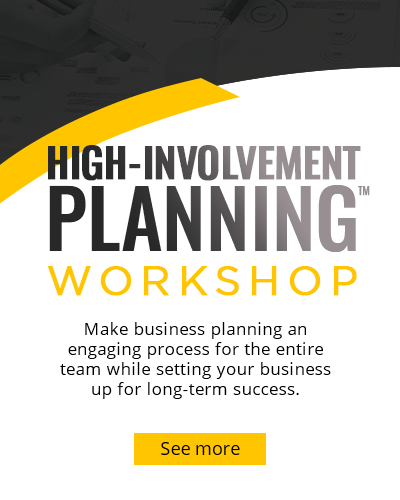
While the percentage of engaged employees in the US is higher than it has ever been, according to Gallup more than 50% of employees are unengaged: “they may be generally satisfied but are not cognitively and emotionally connected to their work and workplace; they will usually show up to work and do the minimum required but will quickly leave their company for a slightly better offer.”
What’s worse—13% are actively disengaged employees who, in addition to being poor performers who exerted minimal effort, are four times more likely to leave their organization than the average employee.
Overall, organizations with higher employee engagement perform at higher levels including better customer engagement, higher productivity, better retention, fewer accidents, higher profitability and better health outcomes for workers.
But how do you increase employee engagement in the short term, and then prepare for long-term engagement? Here are four simple practices to increase employee engagement immediately:
1. Allow Employees to Add Their Input (and Listen to It!)
Everyone appreciates the opportunity to voice their opinion from time to time, specifically on topics about which they are knowledgeable about or those that directly impact them.
Take the time to ask employees what they could do to make them more efficient and effective at their job. Many times management will make decisions about positions and processes in which they don’t have experience in. In reality, no one knows how to do a job better than the person who is actually doing it. Why not give them an opportunity to offer suggestions on how they can be more successful?
If you allow employees to offer solutions themselves, they’ll undoubtedly be more engaged in creating results—almost immediately.
2. Recognize Employees with Praise and Responsibility
Recognition for a job well done is a valuable tool that management can use to engage employees and build stronger teams. Recognizing employees with praise and responsibility are the two most valuable ways we can engage employees.
Providing honest, timely and positive praise is a proven way to lead to a more satisfied, involved, loyal, committed and motivated employee. When offering praise, be sure to follow some general guidelines:
- Be genuine: praise employees for actual praise-worthy events; don’t manufacture achievements.
- Be timely: give praise in close connection to the action in order to maximize the intended effect.
- Be fair and consistent: if you determine an event to be praiseworthy, you must provide the same type of praise to all employees who exhibit the same behavior.
- Be positive: don’t dilute praise by attaching it to a suggestion for improvement. Praise employees for their achievements, and save any suggestions or negatives for another time.
Another way to recognize employees is with responsibility; for example, award promotions or asking for help in a certain delegated assignment or special project. These opportunities show employees that you value their skills, and employees who feel valued for their contribution to the team will engage and focus more on working together towards a common goal.
3. Communicate with Employees About the Business
Employee engagement is greatly dependent on the level of information to which employees have access. Our research stands firm on the belief that employees have no reason to engage if left in the dark!
Communication with employees must be timely, accurate and truthful to be most effective. Articulate employee and company objectives. Get them to understand the company's focus and direction.
Open-book management and transparency are the structures that best support a collaborative and honest feedback loop between owners and employees. It can be frightening to actually show your employees the company finances and operational information.
But you don't have to show everything! Great Game coaching teaches you how to show just enough of the right information.
But you shouldn’t stop there! Leaders should implement a formal business literacy program to help employees understand the information shared with them. Your employees should understand what they’re looking at or the buy-in will be minimal.
4. Train Employees to Understand the Basics of Business
You’ve heard it before: knowledge is power. Suppose you can empower employees by teaching them the basics of business. In that case, their engagement levels will skyrocket because they’ll actually understand how business works and, most importantly, how they fit into the big picture.
The business training you offer doesn’t have to be elaborate (in fact, we recommend that you keep it simple and non-intimidating). Simply sending them through basic business and financial literacy training will be enough to arm them with the knowledge they need to listen (and talk) comfortably about the business.
Regardless of the industry you’re in or the structure of your company, every business can benefit from having a more engaged workforce where employees are energized and focused on performance and productivity.
Learn more best practices for an engaging workplace by joining us for our next workshop introductory workshop.
Have you used any of these best practices to engage your employees? Do you have any additional best practices to share? Let us know in the comments below!
Other Articles You Might Like:
.png)









.png)




-5.png)

